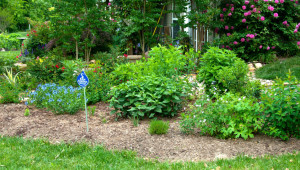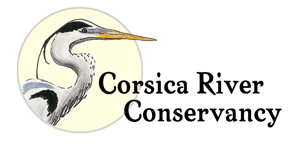Much of the pollution and degradation of our streams and river comes from what happens on the surrounding lands. Landscaping and gardening practices can either harm or help water quality. Once we understand the impact of our land practices, we can adopt practices in our own backyards that promote clean water and healthy habitats. The Resources section of the website provides details on the practices below.
- Reduce the Use of Pesticides, Insecticides, and Fertilizers. Chemicals contained in pesticides and insecticides pose risks to human, bird, and animal health. Nitrogen and phosphorus from fertilizers that flows off yards cause eutrophication or algae blooms, which in turn reduce the level of dissolved oxygen needed for aquatic organisms. Removing vegetation even when replaced by lawns increases polluted stormwater runoff and can lead to lost wetlands and riparian buffers and cause erosion and sedimentation.
- Plant pest-resistant, native species.
- Rotate garden crops to reduce infestation.
- Use mulch and time plantings to avoid peak infestation periods.
- Hand pull weeds.
- Use biological, mechanical or botanical controls as needed for particular pest problems.
- Keep rainwater where it falls by planting a rain garden and using rain barrels
- Rain barrels irrigate gardens while capturing pollutants that wash off roofs.
- Use mulch instead of impervious plastic coverings to increases absorption in bare areas.
- Plant terraced or sloped rain gardens to directly capture roof runoff.
- Plant vegetated swales capture and treat stormwater along curbs and roads.
- Green roofs have numerous benefits for homeowners and the environment.

- Maintain vegetated buffers
- Establish “no mow” buffer zones around wetlands and bodies of water.
- Minimize lawn/turf areas and use native, low-maintenance plantings.
- Cut lawns no shorter than 3” to establish deep roots.
- Plant cover crops. For more information, call the Queen Anne’s Soil Conservation District at 410-758-3136, ext. 3
- Remove and replace invasive plants. The cost of invasive species includes reduced productivity from agriculture and forestry, impaired use of waterways and land, harm to the health of people and animal, and lower property values. For information about common invasive plants and native plant options, visit the Chesapeake Native Plant Center at nativeplantcenter.net or invasive.org/midatlantic/fieldguide
- Leave the leaves. When leaves go to the landfill, unnecessary space is taken up with its accompanying environmental pollution and a fabulous source of nutrition for your lawn and garden is given up. Instead of raking and bagging leaves as they fall, run your lawnmower over them for smaller pieces that will break down and provide important nutrients, with less need for artificial fertilizer or put them in your compost pile.
- Maintain your septic system. The Maryland Sea Grant program has an excellent primer on how septic systems work and what you can do to maintain a well-functioning one before problems occurs. For more information, see https://www.mdsg.umd.edu/onthebay-blog/septic-maintenance-matters-chesapeake-bay
RURAL LEGACY PROGRAM
The State of Maryland also provides incentives to landowners to protect waterways. For example, through the Rural Legacy Program, Maryland’s Board of Public Works provides funding to conserve rural and farm lands through public-private partnerships. The goal of the program is to preserve large, contiguous tracts of land and to enhance natural resource, agricultural, forestry and environmental protection while supporting a sustainable land base for natural resource based industries. Queen Anne’s County has approximately 25,000 acres of preserved lands. In 2019, the County set aside 2,500 acres for conservation efforts.
